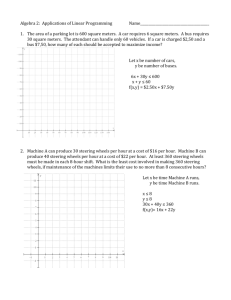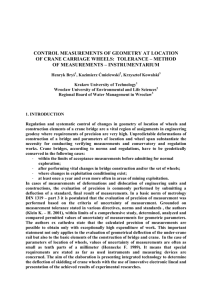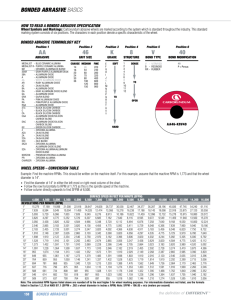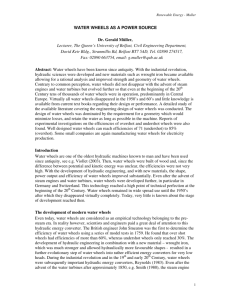Playing with Wheels
advertisement
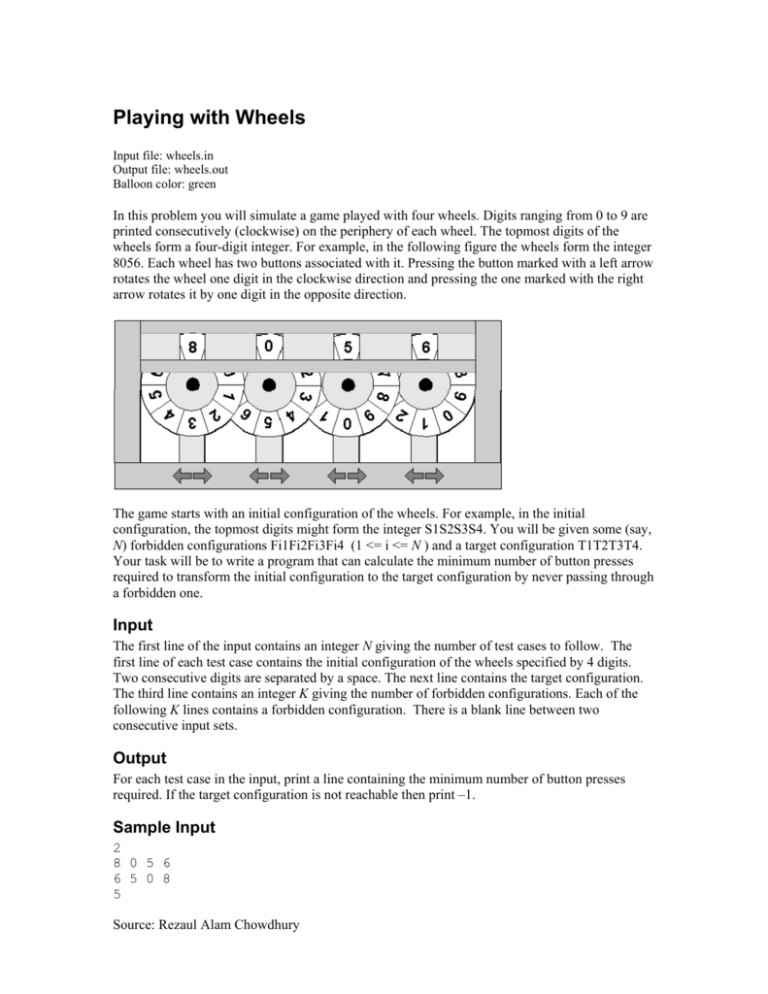
Playing with Wheels Input file: wheels.in Output file: wheels.out Balloon color: green In this problem you will simulate a game played with four wheels. Digits ranging from 0 to 9 are printed consecutively (clockwise) on the periphery of each wheel. The topmost digits of the wheels form a four-digit integer. For example, in the following figure the wheels form the integer 8056. Each wheel has two buttons associated with it. Pressing the button marked with a left arrow rotates the wheel one digit in the clockwise direction and pressing the one marked with the right arrow rotates it by one digit in the opposite direction. The game starts with an initial configuration of the wheels. For example, in the initial configuration, the topmost digits might form the integer S1S2S3S4. You will be given some (say, N) forbidden configurations Fi1Fi2Fi3Fi4 (1 <= i <= N ) and a target configuration T1T2T3T4. Your task will be to write a program that can calculate the minimum number of button presses required to transform the initial configuration to the target configuration by never passing through a forbidden one. Input The first line of the input contains an integer N giving the number of test cases to follow. The first line of each test case contains the initial configuration of the wheels specified by 4 digits. Two consecutive digits are separated by a space. The next line contains the target configuration. The third line contains an integer K giving the number of forbidden configurations. Each of the following K lines contains a forbidden configuration. There is a blank line between two consecutive input sets. Output For each test case in the input, print a line containing the minimum number of button presses required. If the target configuration is not reachable then print –1. Sample Input 2 8 0 5 6 6 5 0 8 5 Source: Rezaul Alam Chowdhury 8 8 5 7 6 0 0 5 5 4 0 5 8 0 0 0 0 0 0 1 9 0 0 0 3 1 7 0 0 0 0 1 9 0 0 5 4 0 0 0 0 0 1 9 0 0 0 0 7 7 8 8 8 1 9 0 0 0 0 0 0 Sample Output 14 -1 Source: Rezaul Alam Chowdhury





